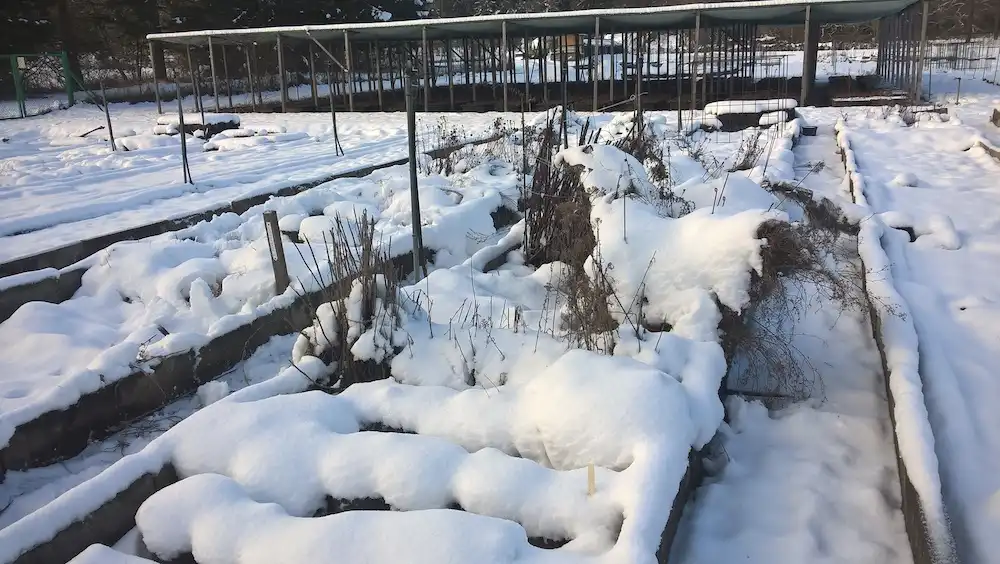Retention of dead biomass by plants likely to serve function in carbon and nutrient cycling
Retention of dead biomass by plants is common in the temperate herbaceous flora and can be related to certain plant traits, indicating relevance to ecosystem functioning. These are the main findings of an experimental study on more than 100 plant species jointly performed by researchers from the German Centre for Integrative Biodiversity Research (iDiv), Leipzig University, the Czech Academy of Sciences, and the Charles University, Prague. The study has recently been published in the Journal of Ecology.
As the winter approaches and first freezing temperatures sweep across temperate climates, plants become dormant and shed their leaves. However, some trees and grasses retain their leaves and stalks during autumn and winter, although already pale and without colour. This phenomenon, termed marcescence, can be recognized all around when walking through a snowy landscape. But has marcescence a function in nature or is it a remnant from the bygone summer without specific meaning?
We knew that marcescence had been relatively well researched in arid ecosystems, in which solar radiation strongly degrades difficult-to-decompose compounds in retained biomass. This facilitates decomposition of and nutrient release from that biomass once shed, with potential competitive advantages for the respective plants. In temperate regions, however, research has been scarce and mainly focused on tree species, with few exceptions, and virtually nothing is known about marcescence in the temperate herbaceous flora, although simple observations indicate that it is widespread. We thus asked ourselves how common marcescence is in our latitudes and whether it can be linked to certain plant traits.
Fortunately, we had access to a large common garden experiment that was running at the botanical gardens in Prague. The experiment was ideal to tackle our research question as a large variety of plants were grown in the same soil substrate and under the same climate. We created a battle plan and finally sampled dead biomass from 127 plants shortly before the start of the subsequent growing season, determined the proportion of marcescence for each of these plants, and related this proportion to plant functional traits.
To our surprise, almost all of the investigated plants (123 of 127) kept at least part of their biomass marcescent, indicating the commonness of marcescence in the temperate flora. Marcescence particularly predominated in tall plant species with small leaves and high carbon concentrations in their tissues and in those commonly preferring intensely disturbed sites. Marcescence may thus provide advantages for certain plants in the initial stages of succession and might influence carbon and nutrient cycling. As we are just beginning to understand the determinants and function of marcescence in temperate regions, intensified research efforts are crucially needed to disentangle the relevance of this widely overlooked phenomenon to ecosystem functioning.
Read the paper: Journal of Ecology
Article source: German Centre for Integrative Biodiversity Research (iDiv) Halle-Jena-Leipzig
Author: Gerrit Angst
Image: Common garden experiment in which we measured the proportion of marcescence. Credit: Renáta Schnablová.








